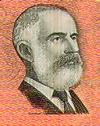
On 29 Jan 1850, Lawrence Hargrave was born, an Australian aeronaut and inventor made important studies of wing surfaces for flying-machines, and invented the box kite. In this excerpt from Progress in Flying Machines (1894) you can learn more than you probably knew before about Flying-Machine Model and Kite Inventions. The illustrations show variaties of kite design that will surprize you, too.

On 29 Jan 1934, Fritz Haber died, a German physical chemist, winner of the Nobel Prize for Chemistry (1918) for his development of a method of synthesizing ammonia (1909) directly from nitrogen and hydrogen. This led to commercial large-scale production of nitrogen fertilizer. His ardent patriotism had led him to develop poison gases for chemical warfare in WW I. Yet Haber, a Jew by birth, was exiled from his homeland in 1933 by the Nazi party and died shortly after. Today's book pick is: Fritz Haber: Chemist, Nobel Laureate, German, Jew: A Biography, by Dietrich Stoltzenberg, whose original work is here abridged and translated into English. The biography of Haber is about a complex man. His process for synthesis of ammonia has helped feed billions of people with artificially-fertilized food production sythesized using the chemically reclusive nitrogen from the air. Yet the same process produces the raw chemicals necessary for explosives. So together with the chemical weapons of WW I and the explosives of wars thereafter, he has contributed to the deaths of millions. Whether you are interested in the history of chemistry, or the activities of the scientist during war, there is much in this book to hold your attention.
It is available from Amazon, typically about New from $44.95. Used from $25.25. (As of earlier time of writing - subject to change.)
 | Dermatology ... this young daughter of medicine ... |
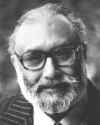 | It is good to recall that three centuries ago, around the year 1660, two of the greatest monuments of modern history were erected, one in the West and one in the East; St. Paul’s Cathedral in London and the Taj Mahal in Agra. Between them, the two symbolize, perhaps better than words can describe, the comparative level of architectural technology, the comparative level of craftsmanship and the comparative level of affluence and sophistication the two cultures had attained at that epoch of history. But about the same time there was also created—and this time only in the West—a third monument, a monument still greater in its eventual import for humanity. This was Newton’s Principia, published in 1687. Newton's work had no counterpart in the India of the Mughuls. |
 | Workers must root out the idea that by keeping the results of their labors to themselves a fortune will be assured to them. Patent fees are so much wasted money. The flying machine of the future will not be born fully fledged and capable of a flight for 1,000 miles or so. Like everything else it must be evolved gradually. The first difficulty is to get a thing that will fly at all. When this is made, a full description should be published as an aid to others. Excellence of design and workmanship will always defy competition. |
| Before you look at today's web page, see if you can answer some of these questions about the events that happened on this day. Some of the names are very familiar. Others will likely stump you. Tickle your curiosity with these questions, then check your answers on today's web page. | |
| Births | |
 | Abdus Salam, born 29 Jan 1926, was a Pakistani nuclear physicist who was one of three men that shared the 1979 Nobel Prize for Physics for independently formulating a theory explaining the underlying unity of the weak nuclear force and a certain other fundamental force. What is other related fundamental force? |
| no image | On 29 Jan 1773, Friedrich Mohs was born, a German mineralogist who devised the Mohs scale. To what is the Mohs scale applied? |
| Deaths | |
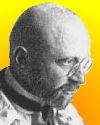 | Fritz Haber (1868-1934) was a German physical chemist, winner of the Nobel Prize for Chemistry (1918) for his development of a method of synthesizing ammonia (1909). This method had commercial potential in the large-scale synthesis of fertilizer. What were the raw materials used in the Haber process? |
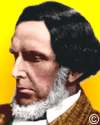 | Robert Mushet (1811-1891) was an English metallurgist developed a method of manufacturing steel (1856) by the addition of a certain substance, which improved on the Bessemer process. He produced steel that was more malleable, making durable rails that replaced the use of cast iron for railways. What substance did Mushet add to produce his malleable steel? |
| Events | |
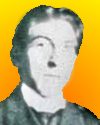 | On 29 Jan of a certain year, Émil H. Grubbe, a Chicago researcher, became the first known to administer x-ray radiation treatment for the recurrent breast cancer of a fifty-five-year-old woman. Grubbe tried radiation as a tool against cancer after he suffered a radiation burn while experimenting with X-rays. In which decade did Grubbe make this first attempt at using x-rays against cancer? |
 | On 29 Jan 1958, The Boston Herald printed a letter from Olga Owens Huckins attacking a certain pesticide as dangerous. Huckins was a friend of Rachel Carson, and also sent a personal letter to her, which together prompted the writing of Carson's book Silent Spring. What was the pesticide being criticized? |
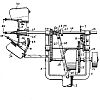 | On 29 Jan 1924, Carl R. Taylor was issued a U.S. patent for a “machine for forming thin, freshly baked wafers while still hot” into shaped containers. Multiple dies were designed on a turntable, such that when formed, the product had time to cool and harden before rotating into position for release. This was the first U.S. patent for such a product. What was the intended use for these cones? |
Fast answers for the previous newsletter for January 28: 120 degrees • Christa McAuliffe • sending atomic bomb secrets to Russia • the decade including the year 2000 • 2 mph.
 If you enjoy this newsletter, the website, or wish to offer encouragement or ideas, please send feedback by using your mail reader Reply button.
If you enjoy this newsletter, the website, or wish to offer encouragement or ideas, please send feedback by using your mail reader Reply button. Your click on a Facebook, StumbleUpon, or other social button on the site webpages is also a welcome sign of appreciation. Thank you for using them.
© This newsletter is copyright 2020 by todayinsci.com. Please respect the Webmaster's wishes and do not put copies online of the Newsletter — or any Today in Science History webpage. (If you already have done so, please remove them. Thank you.) Offline use in education is encouraged such as a printout on a bulletin board, or projected for classroom viewing. Online, descriptive links to our pages are welcomed, as these will provide a reader with the most recent revisions, additions and/or corrections of a webpage. For any other copyright questions, please contact the Webmaster by using your mail reader Reply button.
--
If you do not want to receive any more newsletters, Unsubscribe
To update your preferences and to unsubscribe visit this link
Executive Real Estate Business Class
-
"It was like a man with wings. It wasn't like anything you'd see on TV or in a monster movie." ...
About the publisher
Search This Blog
Blog Archive
-
▼
2021
(585)
-
▼
January
(109)
- Ian Kershaw on why Hitler declared war on America
- On This Day for January 31 - Guy Fawkes executed i...
- Newsletter for Sunday 31 January.
- January 31: Slavery Abolished in the USA, Guy Fawk...
- On This Day for January 30 - “Great Soul” assassin...
- Newsletter for Saturday 30 January.
- January 30: Oliver Cromwell Ritually Executed, Mah...
- On This Day for January 29 - Iraq, Iran, and North...
- Newsletter for Friday 29 January.
- January 29: Romeo and Juliet, Coca-Cola and the Se...
- 'The Food That Built America' Is Back!
- On This Day for January 28 - Explosion of the spac...
- Newsletter for Thursday 28 January.
- Inside The Still-Mysterious Circumstances Of Heath...
- Demystified: What’s the Difference Between a Presi...
- On This Day for January 27 - Vietnam War ended, Wo...
- Newsletter for Wednesday 27 January.
- January 27: Kaiser Bill is Born, the Siege of Leni...
- You are now unsubscribed
- What The Wild West Actually Looked Like in 48 Reve...
- New Savings! $50 off Family Memberships
- On This Day for January 26 - First European settle...
- Newsletter for Tuesday 26 January.
- January 26: Catholic Counter-Reformation, British ...
- On This Day for January 25 - Claudius affirmed as ...
- Newsletter for Monday 25 January.
- January 25: São Paulo Founded, Charles Wilkes Disc...
- Queen Victoria and Prince Albert's marriage | Wors...
- On This Day for January 24 - Opportunity's Mars la...
- Newsletter for Sunday 24 January.
- January 24: Scouting for Boys, Apple's Macintosh a...
- On This Day for January 23 - Madeleine Albright sw...
- See All That's Interesting Most Popular Articles
- Please Confirm Subscription To Our Newsletter
- The "Alaskan Avenger" Who Attacked Sex Offenders W...
- On This Day for January 22 - Roe v. Wade ruling, L...
- Newsletter for Friday 22 January.
- On This Day for January 21 - First commercial Conc...
- Newsletter for Thursday 21 January.
- Need Context with Your News?
- Demystified: Where Do Honeybees Go in the Winter?
- On This Day for January 20 - Barack Obama sworn in...
- Newsletter for Wednesday 20 January.
- On This Day for January 19 - Rule in India transfe...
- Newsletter for Tuesday 19 January.
- On This Day for January 18 - German Empire establi...
- Newsletter for Monday 18 January.
- January 18: King of Siam Kills the Crown Prince of...
- Queen Victoria and Prince Albert: was their union ...
- On This Day for January 17 - Hawaiian monarchy ove...
- Newsletter for Sunday 17 January.
- January 17: US-Modoc War, the UN Security Council ...
- On This Day for January 16 - Beginning of Persian ...
- Newsletter for Saturday 16 January.
- January 16: Ivan the Terrible, Louis XVI's Death S...
- The Tragedy Of David Reimer, The Boy Forced To Liv...
- On This Day for January 15 - British Museum opened...
- Newsletter for Friday 15 January.
- January 15: Henry VIII and the Church of England, ...
- On This Day for January 14 - Premiere of Giacomo P...
- Newsletter for Thursday 14 January.
- January 14: The Dutch Conquer Malacca, the US Revo...
- Demystified: Why Does Water Freeze from the Top Down?
- On This Day for January 13 - Émile Zola's “J'accus...
- Newsletter for Wednesday 13 January.
- January 13: 1st Issue of "The Times" of London, Ch...
- On This Day for January 12 - Haiti severely damage...
- Newsletter for Tuesday 12 January.
- January 12: A Day of Coronation, Gandhi's Last Fas...
- On This Day for January 11 - Amelia Earhart's Hawa...
- Newsletter for Monday 11 January.
- January 11: Spices, Morse Code, Insulin and 55 Yea...
- The real history behind Bridgerton
- On This Day for January 10 - Common Sense publishe...
- Newsletter for Sunday 10 January.
- January 10: Thomas Paine Publishes Common Sense, T...
- On This Day for January 9 - Election of Mahmoud Ab...
- THE IGBO LANDING - HOW THEY COMMITTED SUICIDE
- Newsletter for Saturday 9 January.
- January 9: Joan of Arc's Trial, the Daguerreotype ...
- The Biggest Historical Discoveries From 2020 And M...
- On This Day for January 8 - Anniversary of Grimald...
- Newsletter for Friday 8 January.
- January 8: US National Debt Briefly Hits $0, Forma...
- On This Day for January 7 - Galileo's discovery of...
- Newsletter for Thursday 7 January.
- January 7: A Day of Invention - The Typewriter, Hy...
- On This Day for January 6 - Epiphany, Richard II i...
- Newsletter for Wednesday 6 January.
- January 6: Charles I put on Trial for Treason, FDR...
- Meet The Real-Life Goodfellas Whose True Stories W...
- On This Day for January 5 - Golden Gate Bridge con...
- Newsletter for Tuesday 5 January.
- January 5: Richmond Burns, The Nazi Party Forms, A...
- Last Call for 30% off Memberships
- On This Day for January 4 - Burma granted independ...
- Newsletter for Monday 4 January.
- January 4: The Colt Revolver, a 33 Year Strike and...
- Dangers of Victorian London| Roman history quiz | ...
- On This Day for January 3 - Martin Luther excommun...
-
▼
January
(109)
-
Blogroll
-
About
HistoryFact










0 comments:
Post a Comment